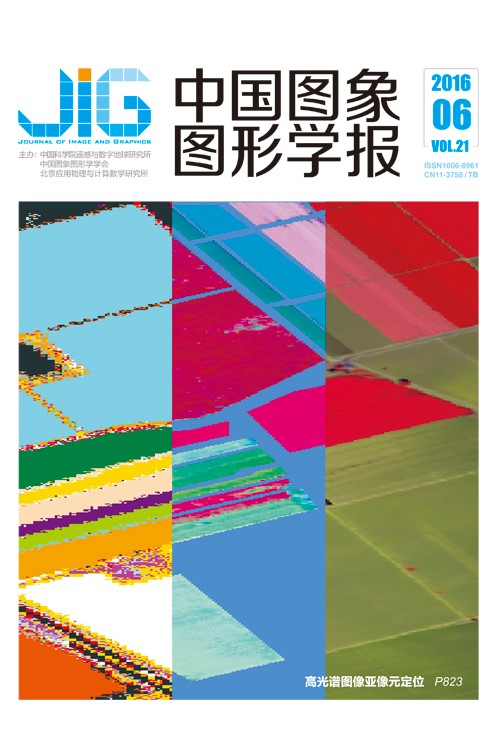
GPU加速的交互式医学CT图像区域分割
摘 要
目的 为了解决交互式医学CT图像区域分割问题,本文提出了基于证据推理规则的区域生长算法(ERRG)。方法 算法综合考虑了医学图像的灰度直方图,Gabor特征和灰度共生矩阵能量3个重要特征,采用Bhattacharyya系数度量相邻像素的相似程度,用效用函数将度量系数合并。针对算法计算效率较低问题,对算法进行并行化,采用GPU进行加速处理。结果 本文算法与基于Random-Walk图像分割算法针对医学CT胃部图像,进行对比实验,表明使用本文算法,真阳性目标像素数占目标区域所有正确像素数的比例(TPF)显著提高,背景像素错误地分割为目标像素的数目占背景正确像素数的比例(FPF)显著降低;通过GPU加速后,算法执行效率显著提高,加速比达到12。结论 本文算法减少了医学CT图像过分割现象,采用GPU加速后能够实现实时交互式医学CT图像分割。
关键词
GPU-accelerated interactive medical CT image segmentation
Cao Xiaopeng1,2, Dong Liang1(1.Department of computer, xi'an university of posts and telecommunications, Xi'an 710121, China;2.School of Computer Science and Technology, Xidian University, Xi'an 710061, China) Abstract
Objective This paper proposes a novel evidential reasoning based region growing (ERRG) method to solve the segmentation problem of an interactive medical CT image. Method ERRG considers some important features of medical images, such as gray histogram, Gabor, and gray level co-occurrence matrix. The Bhattacharyya coefficient is used to measure the similarity between the adjacent pixels and the utility function and to merge the metric coefficients. However, given the low efficiency of ERRG, a parallel region segmentation algorithm for interactive medical images is mapped to GPU to accelerate the algorithm. Result The true-positive fraction (TPF) can significantly increase, false-positive fraction (FPF) can significantly decrease, and the speedup is 12. Conclusion Real-time interactive medical image segmentation can be achieved using GPU-accelerated.
Keywords
graphics processing unit(GPU) medical image image segmentation region growing method evidential reasoning parallel computation
|



 中国图象图形学报 │ 京ICP备05080539号-4 │ 本系统由
中国图象图形学报 │ 京ICP备05080539号-4 │ 本系统由